Design
17 minute read
How to Use Testimonials Effectively On Your Website.
LAST UPDATED:
March 6, 2024


Are you wondering how to use testimonials to effectively draw prospective customers to your website?
More importantly, are you wondering why you need customer testimonials on your website in the first place?
All great questions, so let’s dive right in!
Getting the trust of your audience, as well as potential buyers is the most important part of getting more conversions.
To do this, you need to use customer testimonials.
Below are a few tips and testimonial examples to help your website (and, ultimately, your business):
Testimonials are used to boost the confidence of your prospective customers.
Seeing that your products or services are reliable, they will trust your business more and the quality that it has.
Testimonials are often used to generate leads, boost conversions, and attain new customers for this reason.
Along with this, testimonials build trust with your audience because they back up the claims you’ve made about what your business does best.
Anybody can say “my products are the best on the market.” But can everyone prove it? More often than not, no.
Testimonials are a way to stand out to your target market and offer social proof.
Whether you have a local business or a national eCommerce brand, social testimonials are dynamite for your business.
Testimonials lead to sales for two main reasons:
They Add a Human Quality
A lot of data can feel very impersonal.
While you can prove to the world that you have X number of 5-star reviews, it’s the content of those reviews that really matter to customers.
It’s how they can identify with your product or service and see themselves using it, especially if you offer a very specific product such as engagement ring insurance for lab-grown engagement rings.
Testimonials are, of course, not reviews. But in a similar sense, the content of these testimonials will matter to your customers.
Providing a human quality will allow them to relate with or sympathize with the experiences of the customers in testimonials, especially if these testimonials discuss pain points.
Seeing that someone else found the solution in your business will entice them to do the same.
They Create Social Proof
You’ve probably heard of social proof before, but just as a recap, social proof is when someone uses a product or service, and then creates a chain reaction of people doing the same thing.
This does not have to be a celebrity or a billionaire. It just needs to be someone that people respect and trust.
Getting a testimonial from a trusted source will inevitably send customers your way looking to be like that person, or be liked by society.
Alternatively, a large number of testimonials can create social proof, since people will think, “Since everyone else is doing it, I should be, too.”
Ideally, you should have a mix of testimonials from people that others look up to, as well as ordinary people that fit your target demographic.
Bottom line: Featuring success stories and testimonials will increase conversion rates on your website.
When customers want to see just how honest you are as a company, they will look for two key pieces of evidence — testimonials or data and statistics.
In order to build a website that truly captures your viewers’ attention, you will need to have both placed strategically on your website.
Testimonials
This kind of evidence shows the quality of certain products and services, focusing on what appeals to the hearts and emotions of their target audience.
As mentioned, testimonials will always come from someone who has already tried the product or service, which means they are speaking from experience.
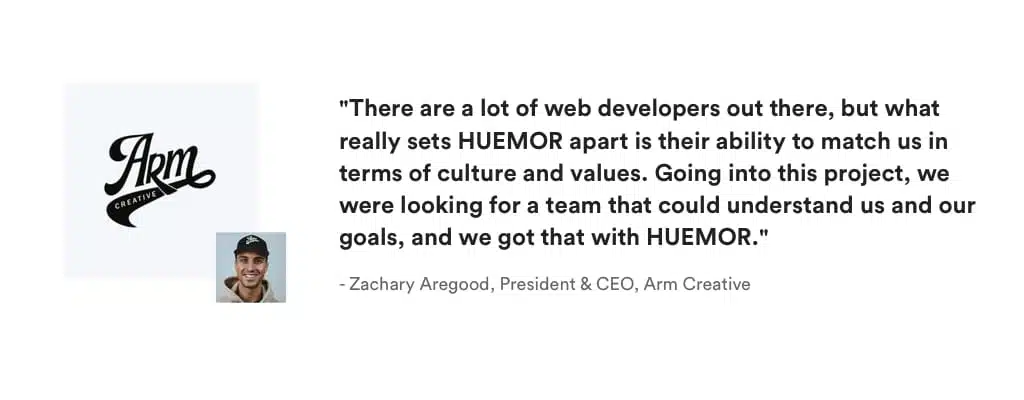
Data and Statistics
This involves qualitative evidence. Think graphs, charts, figures, and the like. For example, you could conduct a survey using a Likert scale chart, showing how many customers are satisfied with your services.

Now that you understand how testimonials work and just how effective they can be, you probably want some on your own website.
This is a great idea but if you don’t have a customer base just yet, this won’t be easy to do.
Nevertheless, you can put systems in place to get testimonials in the future.
Do an Amazing Job
This one is kind of obvious, but it’s the most important thing you can do for your company and brand.
If you want to get good testimonials throughout your website, you have to deliver a great product or experience for your customers.
Not just once or twice, but consistently — doing this each time a customer makes a purchase will lead to testimonials down the line.
Ask for Testimonials
A lot of companies assume that testimonials will willingly come to them, but this isn’t actually true.
Business owners will usually have better things to do than take the time to sit down and write something nice about a product they used or a service they booked.
The best way to compel people to do this is to have a set of processes to ask for positive reviews with every satisfactory customer experience.
Ensure that you have a team to take charge of customer interactions, such as CSRs or managers, who can follow a clear set of processes.
We suggest starting with fans who love your products and services. Because of this, they could already be interested or willing to help you in any way they can. All that’s left to do is ask.
Email Example
Whenever you’re sending an email asking for a testimonial, it needs to be concise, yet polite. A long email will confuse the sendee, and a rude email will turn them away.
As such, these are the two highest priorities when sending an email.
Here is a template email for your reference:
Dear ____,
Would you be alright with writing us a short testimonial? We’re looking to update our website, and it would help us out. I can send you something to base it off of, or you can just write us a couple of sentences relating to your experiences with our company.
Please don’t feel obligated to do this, however. If you’d like to decline, that is completely okay. Just let me know.
Thank you!
Naturally, you’ll want to adjust the tone of this template depending on the way your company is branded. You might want it to be more formal than it already is, or more conversational.
Nevertheless, no matter how they respond, following this guideline will allow you to get what you came for nine times out of ten — a testimonial.
Use Third-Party Sites for Testimonials
It’s a good idea to have your customers use third-party websites where they can leave testimonials or reviews.
While these third-party sites can vary depending on the industry you’re in, there are many common platforms that you can rely on, such as:
Doing this will allow you to broaden the exposure your website receives while adding another layer of authenticity to your business.
By maintaining your profile on third-party sites, you can show audiences that you are a legitimate business by having recent photos, current information, and top reviews.
Furthermore, having an active account that shows up-to-date information will boost results within search engines.
As a result, you’ll gain the attention of more people and attract more visitors to your company and brand.
Along with this, third-party websites will usually display snippets to visually represent your website as soon as search results come in.
Bonus review source – social media testimonials!
Go through your social media feed to see what feedback previous consumers have shared.
This is a great way to collect feedback from real people as well!
Just make sure your customer is okay with you sharing their thoughts as you want to continue to build trust for your brand.
It’s a good idea to write the testimonial on behalf of your customers, and they usually appreciate this as well, as it’s one less thing for them to do.
When writing the testimonial, here are a few tips, as well as some client testimonial examples:
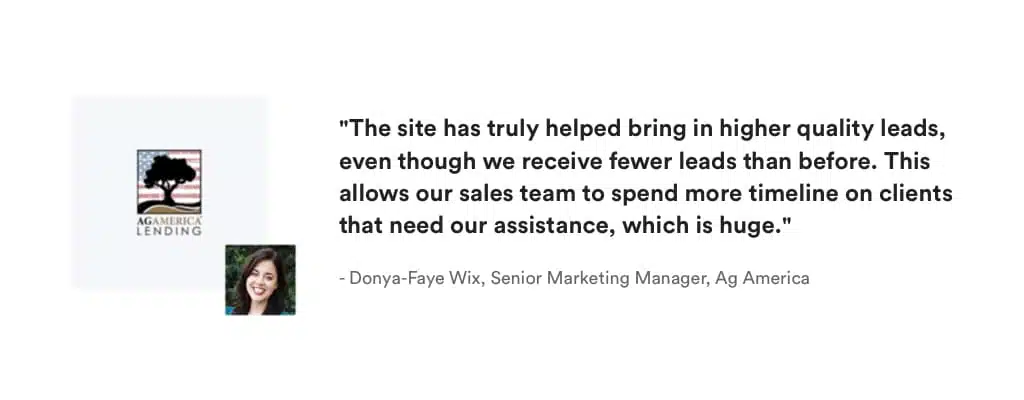
Only Include Testimonials that Have Been Received Ethically
This is probably another obvious piece of advice but we’ll say it anyway: Don’t invent fake testimonials.
Every testimonial on your website should be 100% authentic. Customer feedback only works if it’s honest and authentic.
This doesn’t mean you can paraphrase something a customer said once, either. It needs to be straight from them, and with their permission.
A Good Testimonial is Concise
A short and concise testimonial is the best way to deliver a message that you want people to know about.
Ideally, it will have between 30 to 50 words to ensure that people will read it, rather than find a shorter one that they can easily comprehend.
When writing a testimonial avoid using super-long messages — while your customers may love your work, be sure to ask for their approval to edit these down to an appropriate amount.

A Good Testimonial is Direct
As mentioned, you don’t need paragraphs and paragraphs of good words about your company.
Upfront and direct messages will have more of an impact on those who read them compared to long messages.
Long messages will only drown potential buyers in words, creating confusion. A quote testimonial that’s straight to the point makes it more understandable for your audience.
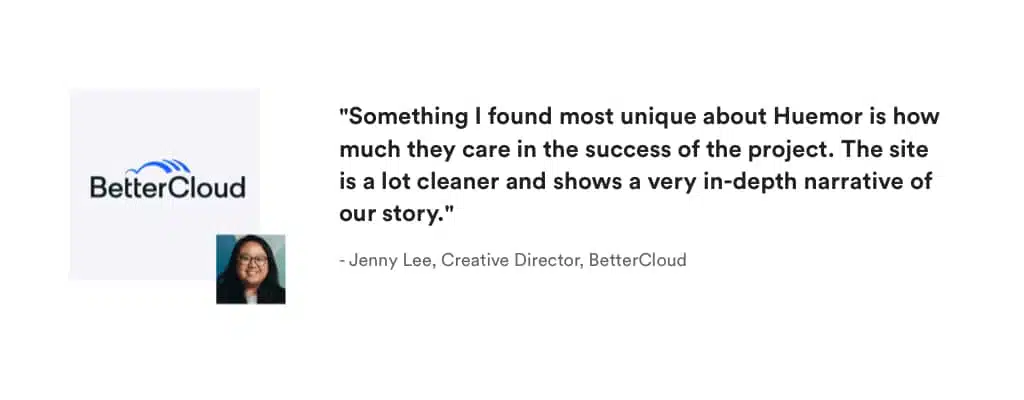
A Good Testimonial is Authentic
It only makes sense that the more information there is in a testimonial, the more authentic and credible it is. A testimonial should have a person’s name, title, picture, and in some cases, their company.
Along with this, the best testimonials will show the personality of the person leaving them, conveying emotion and leaving readers to experience their happiness with the product or service secondhand.
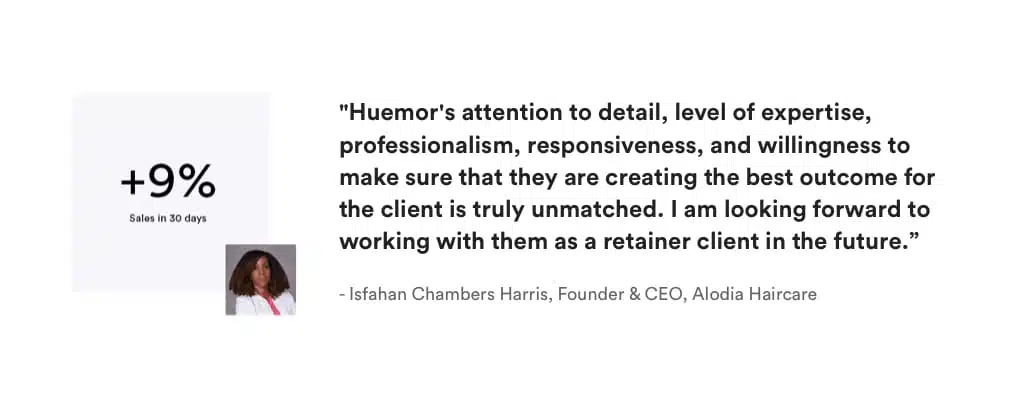
Understand Testimonial Types
From LinkedIn recommendations to YouTube videos, there are so many different testimonial types.
They all will feature some sort of customer success story, and will be told by the customer, but the format can make a big difference.
Video testimonials can be more compelling, but often are not consumed by impatient website visitors, for example.
Short text-based testimonials, in contrast, are easily absorbed but may have lower impact.
These quote testimonials can be in the form of callouts on your website in larger font.
Use them on the homepage, on service pages, or within a key blog post.
Assuming you’re featuring testimonials on your website—which you absolutely should be as a crucial component of your web design—you want the testimonials to convert as much of your website traffic as possible into paying customers.
It’s really about knowing your niche and your target audience—and then adopting the most fitting type of testimonial for them.
Video Testimonials
Video testimonials are a great way for displaying customers testimonials on your website.
This type of powerful customer testimonials can present the story of how a person truly feels about the service or product you offer.
When a potential buyer sees a happy customer, hears their tone, and views their mannerisms, it can truly add a lot of credibility.
Visual endorsements are also more engaging.
According to Forbes, viewers are 95% more likely to understand and keep the message of a customer testimonial video compared to text.
It is all about tailoring your content to what your potential customers want to know from real people and clients.
This increases the likelihood they will purchase a product or service from your business as well as help to boost sales. Fortunately, there are many testimonial tools like Trustmary that assist businesses in collecting customer videos without any extra effort.
Audio Testimonials
Audio testimonials are a powerful digital marketing tool. They provide potential customers with an opportunity to hear first-hand accounts of the product or service in question.
In addition, audio testimonials can help to build trust and credibility, as they provide a customer story that is often more relatable than a traditional advertisement.
When considering audio testimonials, it is important to choose customers who are articulate and enthusiastic about your product or service.
The audio should be clear and well-produced, and the customer should be believable and likable.
With these factors in mind, audio testimonials can be a powerful tool in any marketing campaign.
Interview Testimonials
Interview testimonials are a powerful way to build trust and credibility with potential customers.
By featuring real people who have used your product or service, you can quickly show that your business is trustworthy and worth doing business with.
Authority testimonials are also a valuable source of social proof, encouraging customers that they are making the right choice by choosing your company.
When looking for interview testimonials, be sure to look for ones that are recent and from a variety of sources. This will help you get the most accurate information possible.
Influencer Testimonials
Influencer testimonials can be a highly effective way to promote your product or service.
By partnering with an influencer who has a large following, you can reach a wide audience with your message.
Influencer testimonials are also a powerful customer testimonial because they carry the weight of authority.
When influencers with knowledge and expertise endorse your services or product specific features, as your brand ambassadors, it can help to build trust with potential customers.
Finally, influencer testimonials can add a personal touch to your online marketing campaign.
By featuring real people and their stories, you can connect with your audience on a more personal level.
If you’re looking for a way to reach a larger audience and build trust with potential customers, influencer testimonials may be the way to go.
While having testimonials is great, you shouldn’t just post them for the sake of having them on your website.
You also need to make sure that we have a few key components in place to ensure that you don’t lose your credibility.
Here are a few things to consider:
Is it Relevant?
Be sure to check if the testimonial actually talks about your business — it’s easy to fill pages with testimonials but do they actually matter to your business today?
Make sure that they capture your audiences’ attention by picking out only the most relevant pieces for your business.
A relevant testimonial will talk about the specific products and services you offer or anything new that you will soon be offering.
They will also remain consistent regarding who you are as a company and what you represent.
This way, potential customers can get a better sense of what you have to offer and whether or not you’re the right fit for them.
So when you’re creating or updating your testimonial pages, keep these things in mind and choose testimonials that will actually add value to your site.
Is there an Identifiable Source?
As mentioned, a credible testimonial will come from a source that you can identify and shouldn’t be anonymous.
For B2B companies, a testimonial will ideally have:
- A person’s name
- Their job title
- Their company
- Their photo
However, if some of your existing customers don’t want to include a photo, a logo of their company would suffice as well.
Here is an example of what a testimonial for B2B companies with an identifiable source should look like:
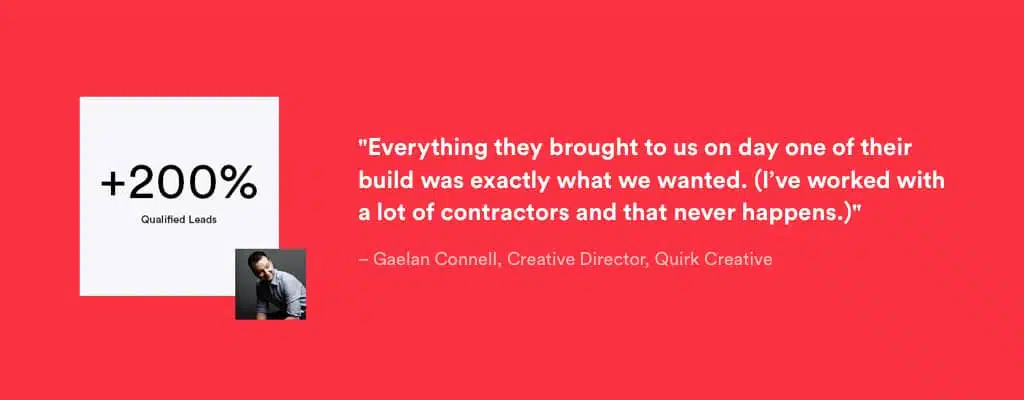
For D2C companies, a testimonial will ideally have:
- A person’s name
- Their photo
Here’s an example of these kinds of testimonials for D2C companies:

No matter the kind of industry you belong to or the nature of your business, there are places on your website where testimonials need to be to produce the most desirable results.
Here are just a few of those areas:
Key Landing Pages
Placing testimonials on your key landing pages will provide the best area for potential customers or buyers to see just how great your brand or company is.
Also, having testimonials on your products or services pages will provide you with the opportunity to back up any claims you might have.
Protip
Much like in this example, ensure that your claims are paired with relevant testimonials. Doing this will greatly boost the effectiveness of these claims.
Your Success Stories / Portfolio / Case Studies
This is where you can provide both quantitative data in the form of data & statistics of outcomes as well as qualitative data using customer testimonials.
As previously mentioned, having a combination of both will win over your customers’ hearts and minds.
Contact Pages and Checkout
Having a testimonial within your checkout or contact page can be the final touch of persuasion that you need.
This could just be what you need to push someone to make the decision to buy your products or services.
To make this as effective as possible, make sure to save your best testimonials for last.
Here are some best practices and further info on client testimonials, web development and website design in general.
If you have further questions, don’t hesitate to reach out.
FAQ About the Use of Client Testimonials
Questions about how to use client testimonials on your website? We try to answer them here.
What are examples of testimonials?
Testimonials are often used to provide social proof on a website. They are typically used on landing pages to help persuade website visitors to convert into customers.
Some customer testimonial examples include quotes from customers about their experience with a product or service, videos or images of customers using the product or service, and written statements from customers about their positive experience.
Having credible and persuasive testimonials on your website can help increase your conversion rate and help you close more sales.
Here are some examples of testimonials:
- “I’ve been using the XYZ product for the past month and my skin has never looked better!”
- “I was hesitant to try online dating, but the ABC site made it so easy and fun that I’m now in a relationship thanks to them!”
- “I was really struggling with my weight until I started using the DEF supplement. In just two months, I’ve lost 10 pounds!”
What are testimonials?
A testimonial is a statement from a satisfied customer that praises a company’s products or services.
Testimonials can be published in print or online, and they provide valuable social proof for businesses.
They can be a valuable part of a company’s content marketing efforts.
Research has shown that testimonials are one of the most effective forms of marketing, as they help to build trust and credibility.
Many companies use testimonials on their websites and in their marketing materials.
However, testimonials can also be used in more creative ways, such as testimonial videos or testimonial parties.
Whether you have a Shopify store, a WooCommerce website, or a B2B website, you can use testimonials to improve customer satisfaction and build brand loyalty.
Not only can testimonials increase a site’s conversion rate for organic traffic, they can also increase paid traffic conversions.
For example, if you are doing Facebook advertising, Instagram ads, or Google ads, the traffic from these will almost always convert better if your landing page features client testimonial examples.
Consider using different testimonial types and having some sort of process to AB test them.
How do I write a testimonial?
A testimonial is a written or recorded statement that supports the credibility of a product, service, or person.
When used correctly, testimonials can be extremely powerful marketing tools.
While some testimonials are general statements of satisfaction, others are more specific, outlining the exact ways in which a product or service has helped the customer.
The best testimonials are those that are believable, relevant, and persuasive.
In order to write an effective testimonial, you should first take some time to consider what you want to say.
What are the specific benefits of the product or service that you’re endorsing? How has it helped you in your business or personal life?
Once you have a clear idea of what you want to communicate, you can start writing your testimonial.
Be sure to include specific details and examples to back up your claims. And avoid making any exaggerations or false claims.
If you follow these marketing tips, you can write a testimonial that will be both relevant and convincing.
What is a testimonial review?
A testimonial review is a type of review that provides first-hand accounts of a product or service from consumers who have used it.
Unlike traditional reviews, testimonial reviews are not written by professional reviewers or experts.
Instead, they are written by everyday people who have purchased and used the product or service.
Testimonial reviews can be found on many different websites, including product review sites, eCommerce sites, and even social media platforms.
Thanks to the rise of user-generated content, testimonial reviews have become an increasingly popular way for consumers to learn about new products and services.
Because they are not written by experts, testimonial reviews offer a more relatable and down-to-earth perspective than traditional reviews.
Which is better, WooCommerce or Shopify?
When comparing WooCommerce vs Shopify, there is no clear winner.
Each platform has pros and cons, and it comes down to what matters most to you and what you are trying to do with your store.
Whether you have a B2B eCommerce website or a beauty brand, you’ll need to dig in deep to understand each eCommerce platform and what it offers.
Our article comparing WooCommerce and Shopify is a good place to start.
Can you redesign my website, including the checkout page?
Yes, website redesigns are one of our primary specialties. No matter which eCommerce site you’re on, we can redesign your entire site, including the about us page, checkout page, product pages, category pages, and blog.
Are paid or fake testimonials illegal?
Testimonials are a common feature on many websites, providing first-hand accounts of how a product or service has helped others.
While testimonials can be genuine and helpful, there is also the potential for companies to use fake or paid testimonials in order to boost their sales.
Paid testimonials are those where the person giving the testimonial has been compensated in some way by the company. This could be in the form of money, free products, or other benefits.
Fake testimonials, on the other hand, are those that have been fabricated entirely.
Both types of testimonials can be misleading to consumers and give companies an unfair advantage.
In the United States, the Federal Trade Commission (FTC) requires that all testimonials must be truthful and not misleading in any way. This means that companies must disclose if a testimonial is paid for and cannot make claims that are not supported by evidence.
The FTC also has rules about endorsements, which includes testimonials. These endorsements must reflect the honest opinions and experiences of the endorser, and endorsers must disclose any material connections they have with the company.
Further Reading On Website Design and Development.
Looking for web development and design inspiration? These articles should help.
- How Much Does It Cost to Build a Website?
- A Step-by-Step Website Redesign Project Plan
- How to Build a Web Design System
- Our Approach to WordPress Web Design
- Choosing the Right Product Metrics Using UX Research Process
- Our Top Retail Website Examples
- Understanding Web Design vs Web Development
- Our Top Beauty Website Examples
- Our Shopify Speed Guide Checklist
- Guide to Optimizing Shopify Image sizes
- Our Service Page Layout Examples
- Best SaaS Websites of 2022
- Our Approach to HubSpot Website Design
- New Website SEO Foundations
- Our Approach to Startup Website Design and Development
- WordPress Performance Optimization Best Practices
- 100 eCommerce Website Design Tips
- How to Use Dynamic Website Content
- All About SaaS Website Design
- How We Approach Drupal Website Design and Development
Get Memorable Insights.
Sign up to receive actionable web design advice directly in your inbox monthly.
Get Memorable Insights.
Sign up to receive actionable web design advice directly in your inbox monthly.
Author
Jeff Gapinski is the President of Huemor where he helps plan the long-term strategic growth of the agency. Jeff is passionate about UI/UX, demand generation, and digital strategy.
What Do You Think?
Have feedback? Maybe some questions? Whatever it is, we'd love to hear from you.




![Website Design Standards We Follow [That You Should Too!]](https://huemordev.b-cdn.net/wp-content/uploads/2021/12/2023.04.04.Website-Design-Standards-We-Follow-That-You-Should-Too.jpg.webp)



No comments found